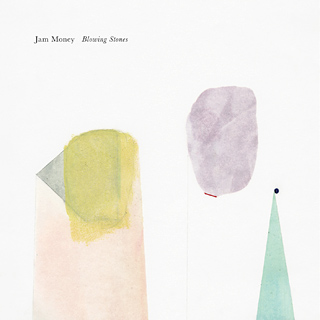Jam Money is the collaborative project of Mat Fowler and Kevin Cormack, the project’s name apparently inspired by an honesty box for various conserves the pair found in a churchyard. The pair first met in 2006, collaborating on the Blank Tape Spillage Fete exchange project, which brought together a set of artists to make music, and a set of musicians to make art.
The results were released as cassette tapes alongside exhibitions and performances at Cecil Sharp House in London – the halls draped in bunting like some cross between a K Records all-ages show and a rural British village fete (Jam Money, then, is perhaps an apt offshoot of these fetes…) The Blank Tape Spillage Fete, which was repeated in 2009, released music by Luke Fowler, David Thomas Broughton, Luke Abbott and Sue Tompkins amongst others, and fostered the Spillage Fete label, through which Blowing Stones is released.
There’s a real sense of collaboration and space to this record, the sleeve notes for which describes it only as, "Drawings, ditties, scribbled notes, exploration and discovery. Open. Collaboration. Shared aesthetic vision. Mat Fowler, Kevin Cormack. Mark-making. Subtlety. Nuance. Music ensues: Sweeps and swoops. Waxes and wanes. Music continues: Transportive. Playful. Inventive. Joyful. Shared aesthetic vision. Looking. Listening. Aimée Henderson. Painting. Meditative. Magical. End." The record is a bit like this text: a little cryptic, but flush with a warm, creative energy. It flits between ideas over a series of short, sketched songs, picking up a melody, tossing it around a few times then putting it to one side to be replaced by something else entirely.
Fowler recorded the initial sketches for Blowing Stones onto four-track cassette between the springtimes of 2012-13, working in the home he shares with the artist Aimée Henderson, whose beautiful, minimal paintings adorn the LP’s cover. Fowler describes the process as, "Aimée painting in the back studio while music escaped from the front, the opening of doors introducing one to another." The cassettes were then passed to Orcadian songwriter Cormack – who also releases records as Half Cousin – for a round of additions.
The names for these wordless songs – ‘Aroma Of Snow’, ‘Noble Spruce’, ‘Jubilant Garden’ – give subtle nods to the slow turn of the pair’s collaborative year, with overloaded guitar notes rustling cassette tape in Phil Elverum-esq saturated peaks; skittering rhythms which sound like they may well come from paintbrushes on pots and pans; the slow weave and warp of wayward clarinet lines; and the burring of synth notes whirring into life. The record’s incremental conception – like the library music to a slow epistolary story – lends it a sparse, spare quality that somehow hangs together as a whole, finding sense in the spaces between songs.
You could easily place Blowing Stones geographically (or Geographically) on that ever-fertile Glasgow-Japan ley line drawn by The Pastels, Maher Shalal Hash Baz and Tenniscoats; or perhaps plot reference points to analogue diviners of Britain’s landscape like Bibio, Samandtheplants or Tissø Lake (the latter, especially in the wandering clarinets and juddering tapes). Waymarkers aside, though, Jam Money’s first set of slow, hypnotic songs on Blowing Stones, complemented by Henderson’s subtle and skilled cover art, create a fine space all of their own.
<div class="fb-comments" data-href="http://thequietus.com/articles/17013-jam-money-blowing-stones-review-2” data-width="550">


